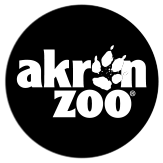 It’s World Otter Day! Designated by the International Otter Survival Fund (IOSF), this holiday is meant to raise awareness for the protection and conservation of otters, both in their native habitat and in human care.
It’s World Otter Day! Designated by the International Otter Survival Fund (IOSF), this holiday is meant to raise awareness for the protection and conservation of otters, both in their native habitat and in human care.
Otters are well known for their energetic behavior which includes playing with other otters, mud sliding, and burrowing and sliding through snow. The purpose of playfulness is twofold: to strengthen social bonds and to practice hunting techniques. These actions are seen most often in otter pups and otters in human care since adult otters in their native habitat need to conserve energy to hunt.
I “otter” tell you about our playful otters, Molly and Odie! They are two of the 308 North American river otters currently in facilities accredited by the Association of Zoos and Aquariums (AZA), and have been matched by the River Otter Species Survival Plan (SSP) as an ideal breeding pair for genetic diversity. The pair is very outgoing, and both of them enjoy swimming in their pool to interact with guests as they slide down the otter slide!
 Last weekend the Akron Zoo hosted Ode to Otters as a celebration of World Otter Day, and to allow our talented otters to show off. Molly and Odie stole the show during several live training sessions. Keeper Lisa Melnik talked to visitors about why and how we train specific behaviors, and gave a demonstration training session. Molly was more than happy to participate, since she knew this meant she would also earn frozen smelt (fish) as a reward. Odie was a bit slower on the uptake, but once he saw Molly completing behaviors and earning treats, he happily joined in.
Last weekend the Akron Zoo hosted Ode to Otters as a celebration of World Otter Day, and to allow our talented otters to show off. Molly and Odie stole the show during several live training sessions. Keeper Lisa Melnik talked to visitors about why and how we train specific behaviors, and gave a demonstration training session. Molly was more than happy to participate, since she knew this meant she would also earn frozen smelt (fish) as a reward. Odie was a bit slower on the uptake, but once he saw Molly completing behaviors and earning treats, he happily joined in.
Though otters are thriving today, both in their natural habitats and in human care, this has not always been the case. Otter history is both a tragic tale and a glowing success story. Through the 1800’s, otter populations were on the decline because of hunting and trapping for the fur trade, as well as pollution from agricultural and industrial sources. By the early 1900’s, otters could no longer be found in any of Ohio’s waterways. In 1986, however, the Ohio Division of Wildlife felt that the state's waterways were clean enough to once again support otters, so they began a project to reintroduce them to their native habitat. Over the next few years, 123 otters were released, and in 2002 the North American river otter was removed from the Ohio endangered species list. River otters are now listed as least concern on the IUCN red list and can be found in 75 watersheds throughout Ohio.
 Thanks to increased otter awareness, local habitats are healthier and safer for otters than they have been in decades! However, it is important to carry on this success story in order to see continued population growth and thriving ecosystems. You can visit online to help continue to protect otters and otter habitats. Our local habitats “otter” be safe for all animals!
Thanks to increased otter awareness, local habitats are healthier and safer for otters than they have been in decades! However, it is important to carry on this success story in order to see continued population growth and thriving ecosystems. You can visit online to help continue to protect otters and otter habitats. Our local habitats “otter” be safe for all animals!
If you want to help support Molly and Odie, consider “Care for a Critter” at your Akron Zoo. Donations help provide food, medical care, habitat maintenance and conservation programs for our otters, and many other species, for a whole year.
Thanks for celebrating our playful pals with us, and don’t forget to slide into your Akron Zoo to meet Molly and Odie. A portion of all ticket sales supports conservation around the world.
By Erica Rymer, Events and Marketing Specialist. Published May 29, 2019.
